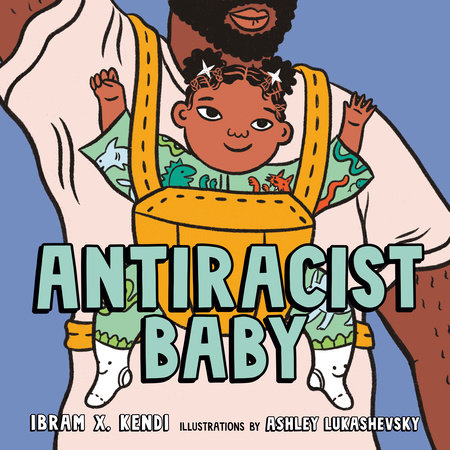Antiracist Baby Encourages Readers Big and Small to Think Deeper About Race and Racism
by Jennifer Garry
“Momma,” my then-kindergartener said after school a few years ago, her voice filled with outrage. “Did you know that people with brown skin used to have to go to different schools than people with white skin?” When I told her I did, she began listing her Black classmates that wouldn’t be allowed to learn with her. She then told me about Rosa Parks (who she developed a years-long obsession with) and Dr. Martin Luther King, Jr. When she was done talking, she got quiet for a moment.
“Momma?” she asked. “Why were people so mean to other people just because of their skin color?”
“I don’t know,” I admitted. “But sometimes they still are.”
Her disbelief was palpable. She could not wrap her little mind around the idea that human beings are treated differently simply because of the color of their skin. At the time, I was satisfied with this reaction. I was glad that my daughter could not believe the injustice of racism and I was glad that it made her angry.
But today? Looking back on that conversation, I failed.
After we talked, we read lots of books about Rosa Parks — which led to searching out stories of other lesser-known Black women and their accomplishments. We read all of these stories and learned about these incredible women, but we never spoke specifically about race or racism. We left it at “racism is wrong and I can’t believe it’s happening.” We didn’t dive into the why or the where or the how to be better.
As a white woman, it’s easy to forget to be outraged. It’s easy to avoid conversations with kids about racism. It’s easy to be complacent while you pat yourself on the back for being “woke,” but doing nothing to actively work at being antiracist.
Ibram X. Kendi’s Antiracist Baby encourages us to stop tiptoeing around racism. With bright, engaging illustrations and thoughtful, rhyming text, this book is an excellent antiracism primer for both little readers and their grown-ups. It opens up huge avenues of discussion and encourages parents and caregivers to engage in conversations with children about racism in hopes of raising a generation of kids who are not afraid to talk about and tackle the issue head-on. In short, it is a book that encourages readers of all ages to do the work.
While the book is called Antiracist Baby, it is definitely not just for babies. An excellent tool to start antiracist work early with children who might not understand more complex issues, it is also a great tool for older children (and even, I would argue, for teenagers). The text is deceptively simple, but, once you start pulling at each of the strands, the conversations that can blossom from it are both deep and endless.
After a quick introduction of sorts that explains that we have to teach babies to be antiracist, the book outlines nine steps “to make equity reality.” The steps are short and direct, with equally straightforward explanations and illustrations that provide jumping-off points for further discussion.

A great example of this is the spread for step number three: “Point at policies as the problem, not people.” The explanation reads: “Some people get more, while others get less… because policies don’t always grant equal access.” The illustration shows a baby reaching towards butterflies. The green butterflies are being caught in a net while the pink butterfly is free to go about its butterfly business and check out a nearby flower, not paying much attention to what’s happening to the other butterflies. There is so much to delve into on this page.

And like this page, the whole book is bursting with seeds for discussion. Even better, the picture book edition includes a letter from Kendi with questions and discussion starters to talk about race and racism with kids. The questions encourage us to think about things like the types of images that are used by the media, what our own schools and neighborhoods look like, and our own experiences with racism.
A thought-provoking, empowering tool, Antiracist Baby is a must-have for every bookshelf. It will make you think, it will make you feel, and it will open your eyes to things that your privilege may very well have shielded you from. If you’re interested in continuing your antiracist education on a more adult level, be sure to check out Kendi’s How to Be an Antiracist.

